Accepted Scientific Name: Fockea edulis (Thunb.) K.Schum.
Nat. Pflanzenfam. [Engler & Prantl] iv. 2 (1895) 296. Engl. & Prantl
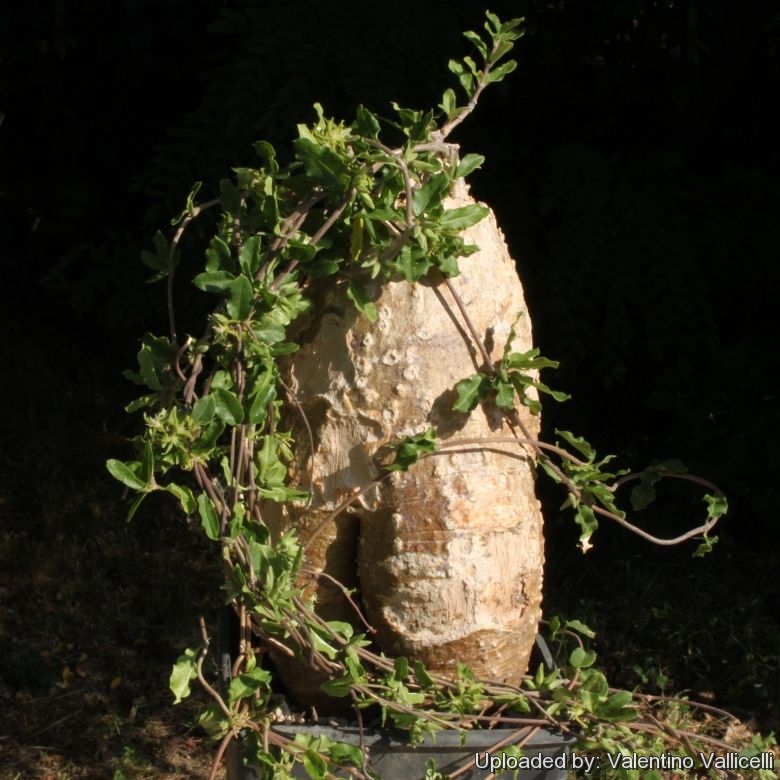
Pergularia edulis (Fockea edulis) Photo by: Valentino Vallicelli
This is an easy-to-grow caudiciform plant with interesting fat grey tuber. Since it is a vine, it produces thin branches that climb on any type of available supports. In the wild, the caudex is partially or totally buried.
Origin and Habitat: Namibia, South Africa (North Cape, Western Cape)
Habitat: Succulent scrub community in warmer drier areas, dry savannah and rockery.
Synonyms:
See all synonyms of Fockea edulis
back
Accepted name in llifle Database:Fockea edulis (Thunb.) K.Schum.Nat. Pflanzenfam. [Engler & Prantl] iv. 2 (1895) 296.Synonymy: 4
back
Common Names include:
ENGLISH: Hottentot Bread
CHINESE (中文): 火星人, 蘿藦塊根
Description: Semi-deciduous caudiciform plant with interesting fat, twisted roots.
Rottstock (Caudex): Thick grey, up to 30(-60) cm in diameter, with small tubercules on it. In the wild, the caudex is partially or totally buried. It tends to grow faster when buried.
Leaves: Green, entire and oblong. It is deciduous, and all foliage will be lost during the winter dormancy period.
Stems: It looks like it has two kinds of branches, one tree-like, the other vines. The thin vine branches may reach a length of 80cm or more, and climb on any type of available support.
Flowers: Whitish-green, not very showy but lightly scented, 0.6-1.5 cm wide. Fockeas are dioecious, so a male plant and a female plant are needed to produce seeds. The flowers are pollinated by fruit flies.
Blooming season: Late summer.
Fruits: Grey pods.
Notes: The flowers of Fockeas are greenish, not very showy but lightly scented These plants are dioecious, so a male plant and a female plant are needed to produce seeds.
Bibliography: Major references and further lectures
1) James Cullen, Sabina G. Knees, H. Suzanne Cubey “The European Garden Flora Flowering Plants: A Manual for the Identification of Plants Cultivated in Europe, Both Out-of-Doors and Under Glass” Cambridge University Press, 11/Aug/2011
2) Botanical Research Institute, Department of Agricultural Technical Services, Republic of South Africa. “The Flowering Plants of Africa” Volumes 50-51, 1988
3) Doreen Court “Succulent Flora of Southern Africa” CRC Press, 01/Jun/2000
4) Jacobsen “Lexicon of succulent plants” 1974
5) Werner Rauh “The Wonderful World of Succulents: Cultivation and Description of Selected Succulent Plants Other Than Cacti” Smithsonian Institution Press, 1984
6) Gordon Rowley “Caudiciform and Pachycaul Succulents: Pachycauls, Bottle-,Barrel-And Elephant-Trees and Their Kin a Collector's Miscellany” Strawberry Press. June 1st 1987
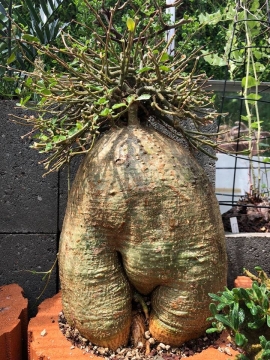 Fockea edulis, an old large specimen in cultivation. (Fockea edulis) Photo by: © Plantemania
Fockea edulis, an old large specimen in cultivation. (Fockea edulis) Photo by: © Plantemania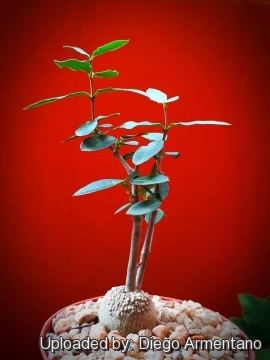 Fockea edulis, young specimen. (Fockea edulis) Photo by: Diego Armentano
Fockea edulis, young specimen. (Fockea edulis) Photo by: Diego Armentano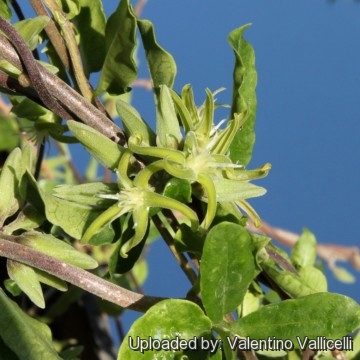 The flowers of Fockeas are greenish, not very showy but lightly scented. (Fockea edulis) Photo by: Valentino Vallicelli
The flowers of Fockeas are greenish, not very showy but lightly scented. (Fockea edulis) Photo by: Valentino Vallicelli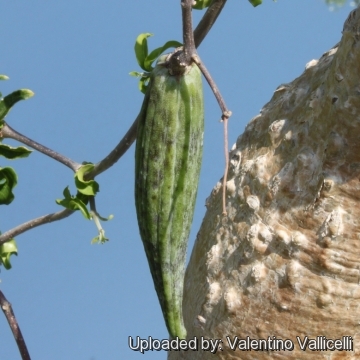 Pergularia edulis (Fockea edulis) Photo by: Valentino Vallicelli
Pergularia edulis (Fockea edulis) Photo by: Valentino Vallicelli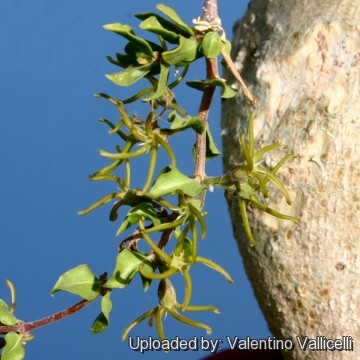 Pergularia edulis (Fockea edulis) Photo by: Valentino Vallicelli
Pergularia edulis (Fockea edulis) Photo by: Valentino Vallicelli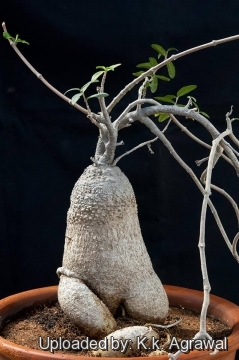 Pergularia edulis (Fockea edulis) Photo by: K.k. Agrawal
Pergularia edulis (Fockea edulis) Photo by: K.k. Agrawal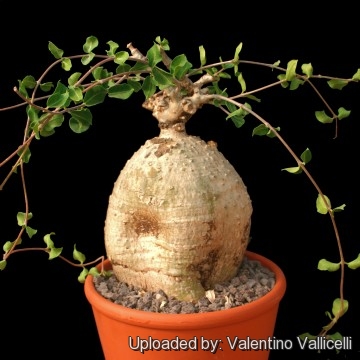 Pergularia edulis (Fockea edulis) Photo by: Valentino Vallicelli
Pergularia edulis (Fockea edulis) Photo by: Valentino Vallicelli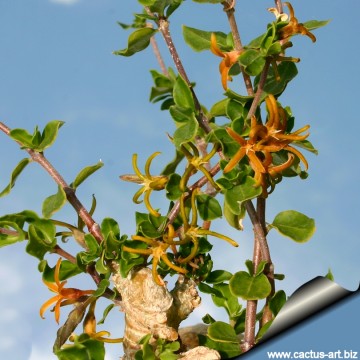 Pergularia edulis (Fockea edulis) Photo by: Cactus Art
Pergularia edulis (Fockea edulis) Photo by: Cactus ArtCultivation and Propagation: This species is of easy cultivation and hardy. Although it shows decreased activity in the January – April period, it never goes into complete dormancy and always carries some leaves. Conversely it can be deciduous in winter if kept cold and dry.
Watering: The plant will take regular water and fertilizer in summer. Rot prone in winter; keep on the dry side and water only enough to keep the tuber from shrivelling.
Soil: It grows well in most soils, and only requires very fast drainage.
Hardiness: Hardy to -2°C, it will take some frost for a short period of time. Plants grown outdoors may endure relatively wet, cold rainy winters. It prefers sun or light shade, but the tuber should stay constantly in the shade.
Maintenance: It is a vigorous twiner and is best trained around a hoop or up a framework, but tends to vine around nearby plants if kept in a pot on a shelf, so it needs to be controlled a bit... give it something to wind around to keep it away from the other plants.
Disease and pests: The fockeas are pest free outdoors, but may attract whiteflies if kept in humid greenhouse environments, and some kind of control might be needed. The plant are also attractive to mealy bugs and the aphid occasionally feeds on young stems.
Rot: Rot it is only a minor problem with Fockea if the plants are watered and “aired” correctly. If they are not, fungicides won't help all that much. It is very unlikely to lose this plant from root rot from excessive water. Reliable as a permanent collector's plant.
Propagation: Fockea edulis is best propagated from seed. Cuttings will give limited success.
Uses: Though the name 'edulis' indicates the plant is edible (It was eaten by the native population of Southern Africa), a long and elaborated cooking procedure is however required to rid the plant of the alkaloids which are present. [We do not suggest plants for consumption!]
Your Photos

by Valentino Vallicelli

by Giuseppe Distefano
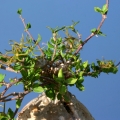
by Valentino Vallicelli

by Valentino Vallicelli
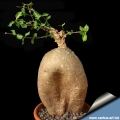
by Cactus Art
























